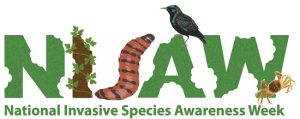While the term “invasive plants, pests and diseases” may not be familiar to everyone, the effects of invasive species in Henrico County should be of concern to all of us. Once invasive pests become established, they can grow and spread rapidly, often because they have no natural predators in their new environment. Invasive pests cost landowners, industry and the U.S. government millions of dollars to control, so taking steps to prevent their introduction is the most effective method of reducing both the risk of invasive species infestations and the cost to control and mitigate those infestations.
Henrico residents can help reduce the spread of invasive pests and plants into the county and the Commonwealth by following these simple steps:
1. Learn about invasive species, especially those found in our region. Invasive species such as the Asian longhorned beetle, emerald ash borer, gypsy moth and imported fire ant wreak havoc on the environment and also displace or destroy native plants and insects.
2. Clean hiking boots, waders, boats and trailers, off-road vehicles and other gear to stop invasive species from hitching a ride to a new location. Learn more at PlayCleanGo.org
- Avoid dumping aquariums or live bait into waterways. LearnmoreatHabitattitude.org
- Don’t move firewood – instead, buy it where you’ll burn it, or gather on site when permitted. Gypsy moth egg cases and emerald ash borer larvae can hitch a ride with the firewood and start infestations in new areas. Learn more at DontMoveFirewood.org
- Use forage, hay, mulch and soil that are certified as “weedfree.”
- Consult with your local nursery or master gardener to help you select plants that are not invasive for your landscaping and gardening projects, and remove any known invaders.
 Volunteer to help remove invasive species from public lands and natural areas.
Volunteer to help remove invasive species from public lands and natural areas.
